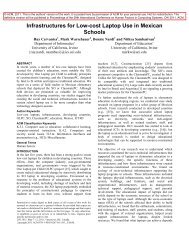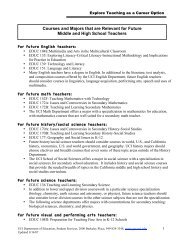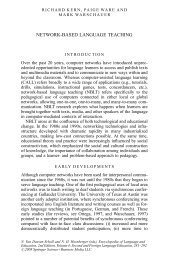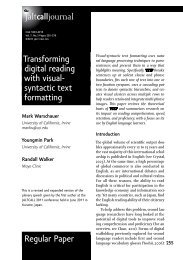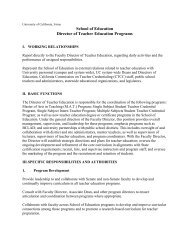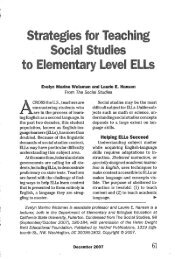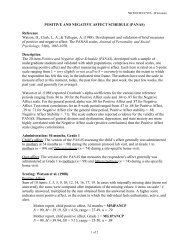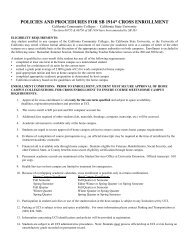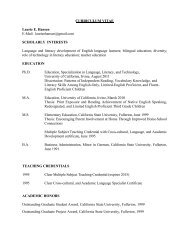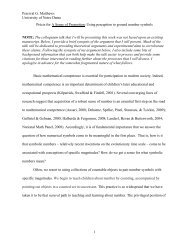Does Detracking Work? Evidence from a Mathematics Curricular ...
Does Detracking Work? Evidence from a Mathematics Curricular ...
Does Detracking Work? Evidence from a Mathematics Curricular ...
Create successful ePaper yourself
Turn your PDF publications into a flip-book with our unique Google optimized e-Paper software.
<strong>Detracking</strong> 30below basic in 7 th grade mathematics score accounts for much of the decline in learning that weobserve in Model 3, and that this conceptualization of peer effects is slightly better at explainingthis decline than the average classroom achievement (Model 5). Similarly, controlling for lowperformingpeers mediates the relationship between Geometry enrollment and student success inthe study’s later years, suggesting that one of the reasons that enrolling in Geometry improvesstudent achievement is that it protects students <strong>from</strong> low-performing peers. The pattern forAlgebra is somewhat different. Controlling for low-performing peers explains approximatelyone-third of the baseline Algebra effect. However, the growing proportion of low-achievingstudents enrolled in Algebra courses does not explain the declining returns to Algebra enrollmentthat we observe over the study period.These analyses suggest that iatrogenic peer effects partially explain the disappointingstudent achievement trends that occurred in Towering Pines during the period of curricularintensification. While both measures of peer effects return complementary findings, it isinteresting to note that the classroom concentration of low-performing peers is a somewhatstronger predictor of student achievement than classroom average student achievement levels.Furthermore, we find that the classroom concentration of low-performing peers is a particularlysalient mediator of the negative relationship between low-level math course placement andachievement in the district.Finally, given that many proponents of tracking argue that detracking harms highachieving students, we examine the distributional consequences of curricular intensification inTowering Pines. While Table 6 provides an indication of how successive cohorts differed onaverage <strong>from</strong> the baseline cohort, Figure 1 examines how the 10 th through 90 th percentilemathematics scores varied across cohorts. Figure 1 reports the results <strong>from</strong> quantile regression


